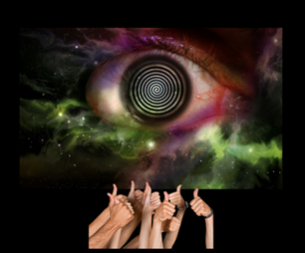Treating Anxiety and Stress with Hypnotherapy
Treating Anxiety and Stress with Hypnotherapy
 There are three main traditional ways anxiety has been treated.
There are three main traditional ways anxiety has been treated.
- Medication is usually offered to the anxiety ridden patient as the first line of treatment. This may work for some people, but it is more like putting a band-aid on a gaping wound. You need to keep reapplying the band-aid daily in the hopes that the wound will eventually get better. And the band-aid may not be big enough to cover the wound. There will be more bleeding and maybe an infection will set in and before you know it you may have to go to the emergency room because adequate treatment was not given at the beginning.
- Some people will go to a counselor or take a stress reduction class, in hopes of getting some relief. This would be like putting the band-aid to treat the gaping wound on another part of the body. So let’s say the wound is on your left leg and then you put the band-aid on the right leg. It obviously will not stop the bleeding at all.
- Some people try to ignore it or get used to their anxiety for many years until the symptoms demand attention. Perhaps the person is so anxious that he is driving his family crazy and his wife wants a divorce. Or he begins to self-medicate his anxiety with alcohol, drugs, sex, food or gambling. Then he is referred to AA or put on a diet or sent to a marriage counselor. Again, the symptoms are being treated without going to the source of the anxiety and the so-called treatment will not solve the problem at all.
| Are you struggling with anxiety? For a limited time, Wellness readers can get 75% off for this online course from one of our graduates. Check out the course by clicking here. |
What Makes Hypnotherapy so Effective in Treating Anxiety and Stress?
We are addressing the underlying emotions that feed the anxiety. Effective hypnotherapy can quickly, usually in the first session, get right down to the source of the client’s anxiety through age regression work. In the hypnotherapy session, we always begin with the current situation or triggering event in the client’s life. So perhaps they describe becoming extremely anxious when facing a public speaking engagement or having to go in front of their professional board for an oral exam, having to speak to their boss or performing in a sporting event.
1.) We start with the feelings that they experience before the performance begins. The feelings that feed the anxiety are quite often fear, panic and shame. Then we ask where are these feelings located in the body. Perhaps they say in my chest or stomach. We then have them express these feelings to relieve some of the stress from their body. This is a main component in what makes hypnotherapy so effective. The majority of counselors and therapists have been taught to try to treat the feelings by talking about them with the client. Talking about feelings does not release or resolve or relieve them because emotions are not located in the brain. They are located in the body.
2.) Now we ask the anxious client to regress back to one of the first times they had these same or similar feelings of performance anxiety. Because we have hypnotized the client, we are actually addressing the subconscious mind and requesting that it bring to the awareness of the client the missing pieces of the puzzle of their anxiety. The subconscious mind is a huge reservoir of information, exactly like the memory chip in your computer. It stores a vast amount of information about patterns in your life and it can be accessed easily through hypnotherapy.
3.) We use the exact same situation of the client facing a performance and then experiencing anxiety, combined with the feelings of (for example) fear which is described as tightness in the stomach, and the feeling of panic may be sweating and the feeling of shame indicated by the person putting their hand over their eyes or face to hide the blushing. And when the client regresses to a similar situation it is often in their childhood.
So keeping with our example of performance anxiety, perhaps the subconscious mind takes our client to age 12 where he is asked to present something in front of the class at school. He reports that his teacher begins to yell at him because he did the wrong assignment. And then the other children start laughing at him and calling him names. He then may regress even younger to age five when he wet his pants in kindergarten and his teacher shamed and embarrassed him in front of the whole class.
4.) Now in the hypnotherapy session we are able to assist that five year old boy to create a different experience. He can tell the teacher that it hurts his feelings when she speaks to him like that, and tell her to never do that again. Ever! He can recognize that his best friend in the class is not laughing at him or mocking him, and he can find comfort in his friend’s loving support. Incredibly, the relief that the five year old experiences actually relieves the adult’s anxiety and bolsters his self-confidence.
The beauty of hypnotherapy is that we can follow the bridge that takes us through the life of the person and right to the sources of dysfunctional patterns and anxiety.
Hypnotherapy treats the complete mind, body and emotions as one complete package, and we can do that all at the same time.
By going down to the source of the anxiety we are rooting it out. It’s as if you wanted to get the weeds out of your garden and you did so by cutting the upper part of the weed down to the soil. Now we all know that by doing that, we have not gotten to the root of the weed and it will certainly grown back very soon! Find the roots of the symptoms in a person’s life today and resolve it once and for all.









